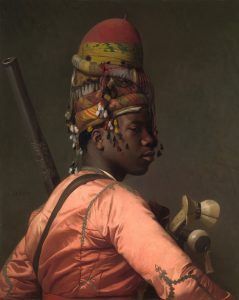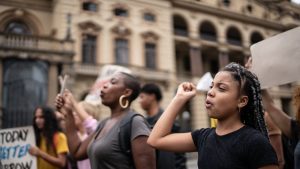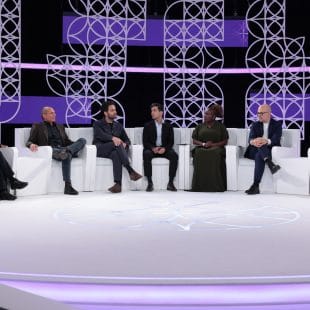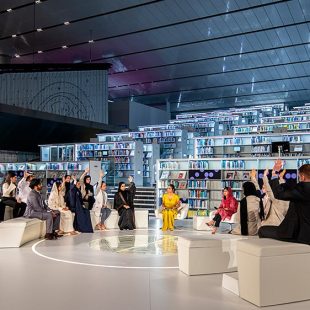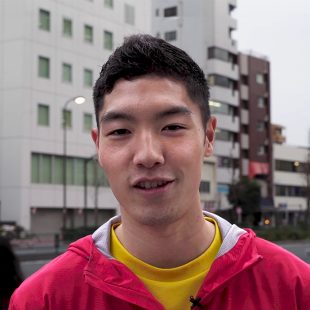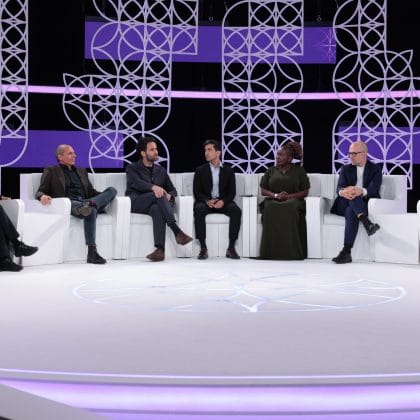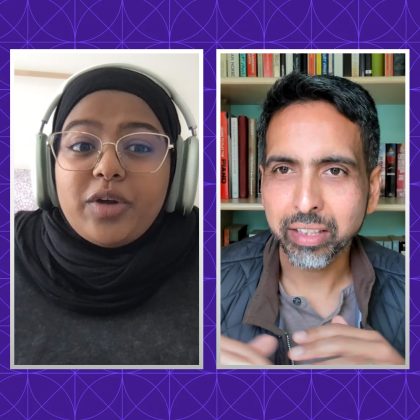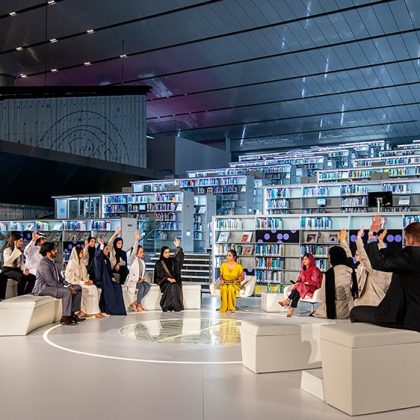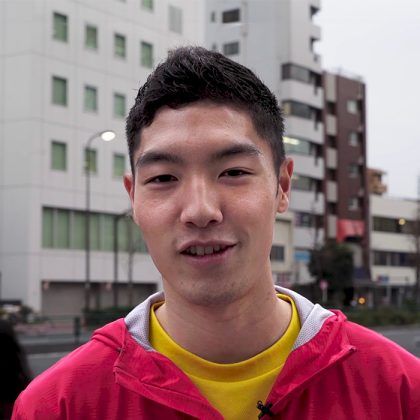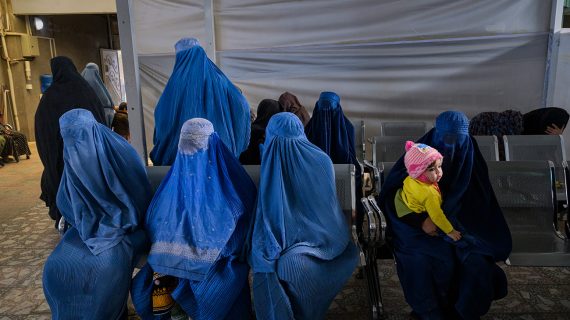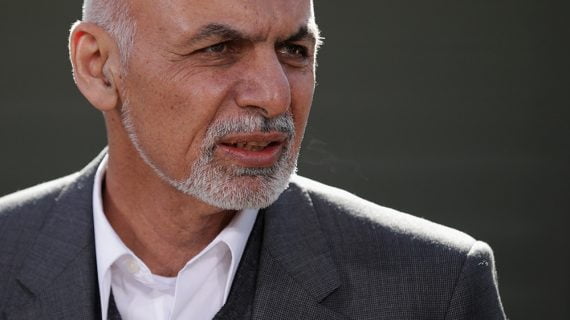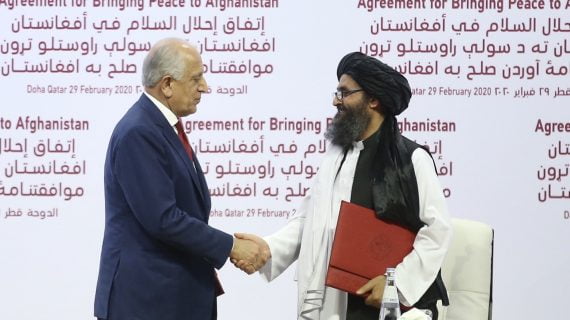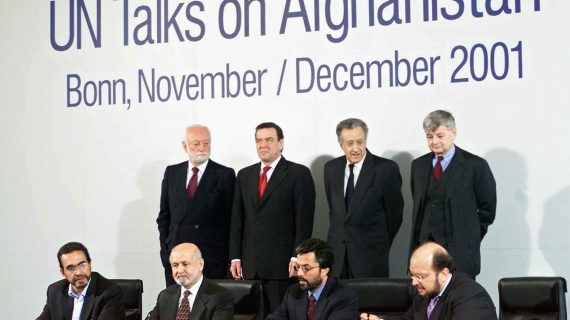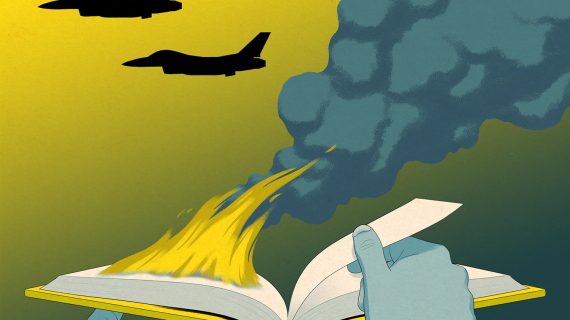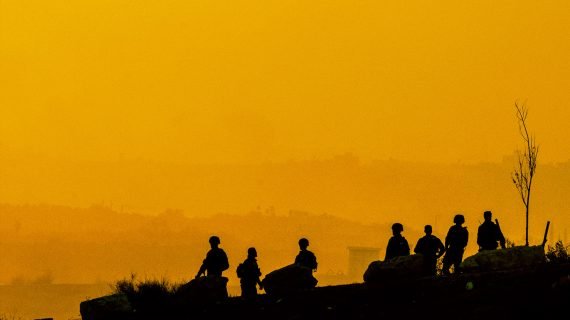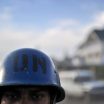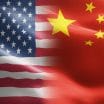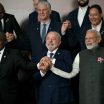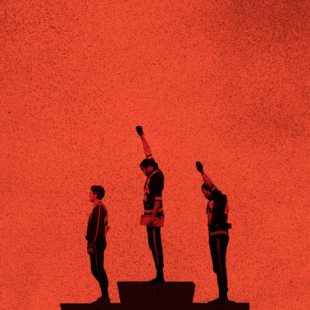By 2006, the US and the Afghan Republic had been fighting the Taliban for five years. Neither side was poised to win. That’s when American political scientist Barnett Rubin received a phone call from a Taliban intermediary that would mark the beginning of a four-year, clandestine process of “talks about talks”—even as fighting was intensifying on the ground and US troops found and killed Osama bin Laden in Pakistan. Veteran Afghanistan reporter Andrew North talks to some of the key players involved for a behind the scenes look at the negotiation.
Why did some of the world’s smartest and most experienced negotiators fail for 20 years to mediate a peace deal in Afghanistan? Find out on “The Afghan Impasse,” a special seven-episode season of The Negotiators from Doha Debates and Foreign Policy. Each episode focuses on a different phase of the talks, brought to us by a veteran reporter who has spent years living and working in the region.
Prefer to listen to the episodes all in one go? Listen to the full season ad-free on Wondery+.
Full transcript
Note: We encourage you to listen to the audio if you are able, as it includes emotion not captured by the transcript. Please check the corresponding audio before using any quotes.
[HAUNTING INSTRUMENTAL MUSIC]
JENN WILLIAMS, HOST:
Welcome back to The Negotiators, a production of Doha Debates and Foreign Policy. I’m your host, Jenn Williams. This is episode two of our special series, “The Afghan Impasse,” exploring 20 years of failed attempts to negotiate a peace deal in Afghanistan.
Just a little note: These episodes are meant to be listened to in order. So if you haven’t heard episode one yet, we recommend that you start there.
In this episode, we’re going to hear from reporter Andrew North. Andrew was first sent to report from Afghanistan for the BBC after the fall of the Taliban in 2001, and he continued to cover the country for the next two decades through the return of the Taliban in 2021.
He’s written a new book called War and Peace and War, and it covers the past five decades of conflict in Afghanistan. We’ve asked Andrew to explore the moment that some say might have been the best opportunity for negotiated peace in Afghanistan. It began in 2006, after the United States and the Afghan Republic had been fighting the Taliban for five years. US President Barack Obama was in the White House, and for the first time, the US seemed willing to do something they said they’d never do: Negotiate with the Taliban. But the Americans still faced a big problem. How do you even start talking after such a long period of non-engagement? Here’s Andrew North with “The Afghan Impasse,” episode two: “Secret Talks.”
[OMINOUS MUSIC]
ANDREW NORTH:
First, let’s set the scene. It’s 2006, five years since the United States invaded Afghanistan and overthrew the Taliban regime.
[SOUND OF A HELICOPTER]
NEWS CLIP OF FEMALE REPORTER:
Fox Company headed out at dawn on Saturday. Their mission: To cut the enemy off at the source along the border with Pakistan, the razor’s edge of the war.
NEWS CLIP OF MALE REPORTER:
US commanders acknowledge five years after the 9/11 attacks were launched from Afghanistan, the war here is a long way from over.
ANDREW: Not only have the Taliban revived with the help of their cross-border sanctuary in Pakistan, but their rebellion against the American-backed government is spreading across Afghanistan, with casualties rising on all sides. The priority for the United States remains winning on the battlefield, with the generals driving the strategy. No one on the US side is actively seeking a negotiated political solution.
UNIDENTIFIED MAN:
I was in Kabul and I wrote to my former boss, Lakhdar Brahimi.
ANDREW: That’s Barnett Rubin. As you might remember, he’d been involved in creating the interim Afghan government in 2001, working for Lakhdar Brahimi, the UN special envoy for Afghanistan.
BARNETT RUBIN: And I said, “I have the feeling that things are coming apart.” And he said, “That’s because there’s no political settlement. Look into that.” So I did.
ANDREW: It was the start of an odyssey of secret and unofficial meetings that Rubin conducted over the next few years, moving between Afghanistan, the Gulf and Europe in pursuit of a negotiated end to the Afghan war.
BARNETT: First thing I did was I went to see Mullah Abdul Salam Zaeef, who had just gotten out of Guantanamo. He had been the Taliban’s ambassador to Pakistan. And we started a conversation and we developed a relationship, which became very important to the whole process.
[SOUND OF ABDUL SALAM ZAEEF SPEAKING IN PASHTO]
ANDREW: It was Mullah Zaeef talking here in our last episode about how he had been advocating for the United States to talk to the Taliban even before he was arrested and sent to the Guantanamo Bay prison camp.
[SOUND OF ABDUL SALAM ZAEEF SPEAKING IN PASHTO]
ANDREW: And over the next few years, Zaeef continued to be a key interlocutor for Rubin as he expanded his peacemaking efforts.
BARNETT: Zaeef was always in contact somehow or other with the actual Taliban.
ANDREW: Sometimes, Rubin just met people who could be useful in between flights in hub airports like London’s Heathrow. Rubin wasn’t the only one looking for a political solution. Lisa Golden is the director of the Peace and Reconciliation Department at the Foreign Ministry of Norway.
LISA GOLDEN:
Norway’s assessment from early on was that a purely military solution wasn’t going to bring peace and stability to Afghanistan. That there was little chance of wiping the Taliban movement out as a factor, you know, in Afghan society and in the conflict. That the Taliban would really need to be incorporated into the political system of Afghanistan if it was to become stable.
ANDREW: Now, Norway also had its own troops in Afghanistan, but they have always been known for their peacemaking efforts from the Middle East to Asia.
LISA: We started reaching out, having discreet discussions with the Afghan government at the time, as well as with Taliban representatives or people in close contact with them, you know, on how negotiations could be started and on what a political solution to the conflict might look like.
ANDREW: While the Norwegians were trying to build up their own Afghan peacemaking channel, Barnett Rubin had carried on with his. He now had a powerful patron. In 2009, President Obama appointed Richard Holbrooke as his special envoy for Afghanistan and Pakistan. Holbrooke had led the Dayton Peace Accords in 1995, which had ended the war in Bosnia. So he brought star power to the effort to settle the Afghan conflict. And Holbrooke asked Rubin to join his team.
BARNETT: Now, the United States at that time has no policy toward a political settlement in Afghanistan. Our policy was, individual Taliban could surrender, essentially, but we weren’t going to engage politically with the Taliban organization, which was supposed to disappear. And I had a report which I gave Holbrooke, called something like “How to Move Toward a Political Settlement in Afghanistan.” So Holbrooke read this. We were on a plane. And he said, “Well, I don’t know if this can work, but if it does, it’s the only way we’re going to get out of here.” So he authorized me to keep trying to find out.
ANDREW: If there was a breakthrough moment, it came in the summer of 2009, a few months after Rubin had joined the government.
BARNETT: I was on my vacation in France, and I got a phone call from my Saudi contact. And he said, “You must come to see me in Dubai immediately.” So I immediately went to Dubai, on some money I had from grants in my position at NYU—not with the State Department, because this was all still secret, including from the government. So I went to Dubai, and he told me that Mullah Omar had appointed a single emissary for political negotiations.
ANDREW: That’s Mullah Omar, the co-founder and leader of the Taliban.
BARNETT: And he was the only channel. And that was Tayyab Agha. And he is in Jeddah waiting to see you.
ANDREW: Rubin didn’t meet the Taliban leader’s emissary Tayyab Agha right then, because US rules still barred face-to-face meetings. But that was the start of a process that led to a group of American officials doing just that the following year, for the first time since the US invasion nearly a decade earlier. It’s worth noting that even then, in late 2010, the US officials who attended this first secret meeting in Germany were not allowed to negotiate. They could only listen to what Tayyab Agha, the Taliban emissary, had to say.
BARNETT: Which was: They wanted to open a political office outside of Pakistan. They wanted the United States to free five major Taliban leaders who were in Guantanamo. Then, the idea was Taliban would make some statement about al-Qaida, and the US and Taliban would negotiate. That was a little unclear. But then they would negotiate with what they called other Afghans or the Karzai group. They wouldn’t recognize them as the government. But they had to talk to the United States first. So then he said, “So what’s your proposal?” And they said, “We have no proposal. We are not prepared to make a proposal.” And Tayyab Agha said, “Well, I am prepared.”
ANDREW: Just to be clear about what had happened: The Taliban were prepared to talk to representatives of President Hamid Karzai’s government, despite refusing to recognize it as such, as long as they met representatives of the United States first. But US officials had no position or proposal to make in return. And as they returned to Washington to report on that first meeting, any shift in that position to move talks along depended on high-level clearance.
BARNETT: And then, next thing that happened was Holbrooke died. Just 10 days later. We were rudderless at a very important time.
ANDREW: It was a moment that exposed just how fragile the process was. The Afghan government was worried that they were being excluded, and without Holbrooke, Rubin and the rest of the team were left exposed to other elements in the US government, such as the Pentagon and the CIA, who were also skeptical about negotiating with the Taliban.
BARNETT: You know, we always felt that even though we were authorized to do this, most of the government was against us. We were not breaking any policy, but we weren’t carrying out any formulated policy either. It took about two months, and finally Marc Grossman was appointed. And Marc Grossman started meeting with Tayyab Agha in Qatar. So they had a couple meetings, and then somebody in the Afghan government leaked Tayyab Agha’s name to the press, and Tayyab Agha withdrew from the negotiations, because part of the agreement was that everything would be confidential.
ANDREW: We did ask for interviews with Tayyab Agha and other Taliban leaders, but none of them agreed to talk.
Tayyab Agha’s exit didn’t mean the end of contact between the US and the Taliban, but it’s a measure of how difficult this process was that we’re now going to skip on to 2013, when the US, in consultation with the Qatari government, gave the go-ahead for the Taliban to open an office in Doha. This was the proposal that the Taliban had first made years earlier. It gave them an official political office for the first time since they’d lost power. And it finally brought the talks out of the shadows.
NEWS CLIP OF MALE REPORTER #1:
The peace process, beginning in earnest …
NEWS CLIP OF MALE REPORTER #2:
The first meeting is set to take place on Thursday in the Qatar capital, Doha…
NEWS CLIP OF MALE REPORTER #3:
… Where the Taliban have now opened an office and are flying their own flag.
ANDREW: To put this in context: By then, it’s already two years since Osama bin Laden had been killed in Pakistan, and the United States was pulling out troops after its two-year-long surge. And so its position was now much weaker. And the Taliban knew it. Here’s their spokesman, Suhail Shaheen, talking with Al Jazeera.
NEWS CLIP OF SUHAIL SHAHEEN:
The last decade, the 12 years fighting, in which America and all allies, they tried to defeat this power. But the result is our power is increased, and we are there. So it is a good sign that they have recognized this fact.
ANDREW: But there was a problem.
BARNETT: As you know, in any complex negotiation, when you think you have reached agreement, the two sides, or the three sides or however many there are must sit down and go over the agreement line by line, word for word, and make sure that they all understand it in the same way. And we never did that. And turned out, we did not all understand in the same way, which is not very surprising, really.
ANDREW: That left open to interpretation issues such as how the office would be identified publicly. What would the sign outside the office say, and what flag would it fly? In other words, whether it would look like an official diplomatic mission representing what the Taliban called their Islamic Emirate.
NEWS CLIP OF MALE REPORTER:
It was just Tuesday when the sign went up, and with it, the ire of the Afghan government. It read “The Islamic Emirate of Afghanistan,” what the Taliban called the country when it was in charge.
ANDREW: To the Afghan government, it looked like a direct challenge to their authority. Here’s how then-foreign ministry spokesman Janan Mosazai explained it at the time.
NEWS CLIP OF JANAN MOSAZAI:
Unfortunately, we were faced with a situation where the, the manner in which the office for the Taliban in Doha was established contradicted the written assurances that the Afghan government had asked for and received from the United States.
ANDREW: No one was happy. The Afghan government felt undermined by its own ally, the United States. And it made American diplomacy look amateurish. It had taken seven years to get this far since Barnett Rubin first embarked on his effort to find a negotiated solution to the Afghan war. And because he was in Qatar at the time, it now fell to him to bring this episode to an end and close the Taliban office.
BARNETT: So I asked the embassy for a car, but there were no embassy cars. Because Qatar is a small embassy, they only had four cars; two of them were in the shop, and two of them were being used to prepare for a visit by Secretary Kerry. So a junior Foreign Service officer volunteered to take me in his personal car.
By then it was, it was twilight. And as soon as we were there, we were surrounded by a bunch of machine-gun-wielding country military. The junior State Department officer had not been in this situation before, but I had. So he said, “Well, I think maybe we should go.” I said, “No, no, I know how to handle this.” So I got out of the car, started shaking everyone’s hands and saying hello, greeting them in a friendly manner, you know. And then I explained to them I was from the US embassy, we were there to make sure that the Taliban took down the sign that said Islamic Emirate. You know, I said, “But please, you can go check with your boss.” So they said, “OK.” So I got back in the car. About an hour later, they said OK. And somehow the sign was taken down. So then I took a picture of it with my iPhone. And then we faced a difficult problem, which was how to download the picture on our iPhone to the State Department email system.
ANDREW: Rubin eventually overcame these IT challenges and was able to send the photo of the wall without the sign to the US ambassador in Kabul, who then showed it to President Karzai. But while the Afghan leader was satisfied that the Taliban’s office was shuttered, at least temporarily, he was still nursing deep suspicions about US strategy.
BARNETT: Karzai, meanwhile, had been told all kinds of things by—I don’t know who, and thought that we were having secret negotiations with Pakistan and so on. At any rate, this very complicated, excessively complicated process that didn’t work generated a lot of mistrust. And, a few months later, I decided to resign, because I didn’t think I could be effective anymore.
[GENTLE INSTRUMENTAL MUSIC]
JENN: You’re listening to “The Afghan Impasse,” a special seven-episode season of The Negotiators from Doha Debates and Foreign Policy.
[GENTLE INSTRUMENTAL MUSIC]
UNIDENTIFIED WOMAN:
So I was deputy, and then later, acting US Special Representative for Afghanistan and Pakistan at the State Department.
ANDREW: That’s Laurel Miller, who was one of those US officials who picked up the baton of getting talks going again during Obama’s second administration.
LAUREL MILLER: The goal was to create a peace process. I don’t think there was any expectation that it could be wrapped up quickly, but the goal was to start. You could either call them talks about talks, as they have sometimes been called in other peace processes, or preliminary negotiations. And they focused very much on what are sometimes termed confidence-building measures.
ANDREW: A key element of these early efforts to revive talks was an agreement that the Taliban could reopen their office in Qatar and use it as their negotiating base. But peace was not the first item on the agenda.
NEWS CLIP OF FEMALE REPORTER:
The Taliban released a new video this morning showing a captured US American soldier …
NEWS CLIP OF MALE REPORTER:
According to the military, 23-year-old Private First Class Bowe Bergdahl was captured after leaving his base in Afghanistan for reasons that are still unclear.
LAUREL: The most significant thing that happened during the first couple of years, at the time period I covered, were negotiations that happened indirectly via the government of Qatar to get the release of Bowe Bergdahl in exchange for five Taliban figures being released from Guantanamo.
ANDREW: These were the same five Taliban figures whose release they had first requested at least four years earlier.
LAUREL: That exchange—which happened primarily for reasons of getting back the American soldier, but it was hoped that this would initiate some period of contacts.
ANDREW: Securing Bowe Bergdahl freedom was a domestic win for the Obama administration. But in the broader context of US-Taliban negotiations, it was a moment that underlined how little progress had been made. So now the challenge was to move beyond prisoner exchanges.
LAUREL: What we wanted from the American side was a commitment to engage seriously and in good faith in peace negotiations, and that once we actually opened up a peace negotiation, it had to be done in the open and with the Afghan government present. And so we had what we termed a principle of simultaneity. You can get your office opening, and we can have a phased process of sanctions relief—you can’t have it all up front, but simultaneous with the start of a peace process, where it’s not just you Afghans and we Americans, but it’s everyone at the table.
LISA: At first we met them in small meeting rooms at hotels.
ANDREW: That’s Norway’s Lisa Golden again. And at this point, she and her colleagues were meeting the Taliban in Qatar. It was no longer a solo effort. They were now also coordinating their discussions with US officials and other European counterparts.
LISA: And then we actually started meeting in my hotel room, in other colleagues’ hotel rooms—sort of as an expression of, I think, the closer communication that we were building. We would sit, you know, huddled around a small table in a not-big hotel room—not a suite, not a junior suite, even—you know, with the fruit basket that they provide you with between us, and all my toiletries and suitcase and everything all over the bathroom and the room. And they were very professional and would just, you know, go right into having a serious discussion.
ANDREW: When you were having these early talks—around the fruit basket, so to speak—what did you understand that the Taliban were aiming for?
LISA: Well, they had been expressing to us, you know, for years that they were actually aiming for finding a political solution to the conflict. Each time things stopped, as far as I can remember it, the Taliban were the ones to reach out, and at that time, they were more willing to meet with just the Afghan government, informally, to explore the potential for actual negotiations.
ANDREW: Yet by then, and this is around 2014 and 2015, the United States and its Western partners were negotiating at a severe disadvantage, as former acting US Special Representative Lauren Miller recalls.
LAUREL: Instead of trying to negotiate at the apex of US power and the nadir of Taliban power and capability in Afghanistan, we finally got serious about it as the US was clearly on the way out the door. Even if it took a few more years, like, the writing was very evidently on the wall, and Taliban hold over territory—with or without the consent of the population; I’m not saying that it was with consent of the population, but nonetheless—the Taliban was making steady advances. So the, the point is that it was seeable. If you were looking.
HEKMAT KARZAI:
My name is Hekmat Karzai, and I am the director of the Center for Conflict and Peace Studies.
ANDREW: Hekmat Karzai now lives outside Afghanistan, but still travels back to Kabul to run the center.
HEKMAT: In 2014, I joined the government and I became the deputy foreign minister.
ANDREW: Hekmat Karzai is related to former Afghan president Hamid Karzai, though by the time he entered government, it was led by president Ashraf Ghani and Dr. Abdullah Abdullah, and the two men were putting renewed emphasis on efforts to find a negotiated settlement.
HEKMAT: Afghanistan had come out of a very difficult election, and a national unity government had been formed. In this process. I think many knew that the most important priority was peace, and sometimes the leaders in Afghanistan thought that the road to peace went through Islamabad.
ANDREW: That belief and hope was due to Pakistan’s long-standing support for the Taliban, overseen from the capital, Islamabad. Pakistan wants to make sure that whoever ruled Kabul supported Pakistan’s interests, and Pakistan’s backing was covert, channeled through the country’s powerful ISI intelligence agency.
HEKMAT: We ended up having a broad consensus that Pakistan should facilitate this conversation, and Pakistan agreed to it. So in July of 2015, there was a six-member delegation that I led. We went to Pakistan. It was the head of ISI at that time, General Rizwan, who hosted us. And it was the holy month of Ramadan. We broke fast in our guest house. And then after that, there was cordial greetings and cordial welcoming and hello. Towards the end of the evening, around 3:30, all of us ended up having a meal together to, to get ready for the next day’s fast. So all the, the, the entire Afghan delegations on both sides, the Taliban and us, we ended up sitting down, relaxing, and we ended up having calm conversations about, you know, how do we proceed?
There’s always common ground. I mean, when you look at the conflict and when you look at the amount of people that were being killed on both sides, I mean, it was in the interest of both sides to, to try to push. On many occasions they would say, “We don’t really have an issue with our Afghan brothers, but we have an issue with American soldiers, you know, American boots on the ground. They need to leave.” We were absolutely OK with Americans leaving, yet we wanted to say that before the Americans leave, we should have an understanding. We should have an agreement between us as to how to proceed. How are we going to move ahead? What kind of process are we going to have? What kind of structures are we going to have? That was significant for us.
ANDREW: But just as they were preparing for a second meeting in Pakistan, word leaked out that the Taliban leader, Mullah Omar, was dead, and had been for the past two years.
HEKMAT: There were many who blamed the announcement of the death of Mullah Omar on the Afghan government, and this gave many an excuse. There was a lot of different voices within the Taliban saying, “Wow, for two years we have been fed all these lies. How do we rationalize this?” So for us, I think it was an opportunity to sort of say, “Well, let’s figure out, let’s see what’s going on with the movement, let’s figure out who is going to emerge out of this.”
ANDREW: The answer to that was a new Taliban leader called Mullah Akhtar Mansour. But if Mansour was interested in advancing peace talks with the US-backed government in Kabul, he never got the chance to show it.
[SOUND OF OVERLAPPING PAKISTANI VOICES]
CLIP OF MALE REPORTER SPEAKING:
This is all that remains after a US drone strike killed Afghan Taliban leader Mullah Akhtar Mansour here in southwest Pakistan. The attack is likely to dash any immediate prospect for peace talks.
ANDREW: The assassination of Mansour in 2016 was also a demonstration that even though the United States was now putting more effort into talks, the emphasis was still on aggressive military action, fifteen years since its invasion, and nearly four decades since the Afghan war had begun. Barnett Rubin again.
BARNETT: If you want to make peace after a conflict which has gone on since 1978, you have to make that your priority. But the US never made peace in Afghanistan its priority. That might be on a list somewhere, you know, but that was not our priority.
LAUREL: I saw what it looked like when the US government was really committed.
ANDREW: Laurel Miller, the former acting US Special Representative for Afghanistan and Pakistan.
LAUREL: I was involved in the peace negotiations in Bosnia in the 1990s.
ANDREW: With Holbrooke and, yeah.
LAUREL: With Holbrooke. And, I mean, you had a senior level diplomat who had—he could get a meeting with the president himself any time he needed to. He could summon up an aircraft and an interagency team any time he needed to. And the diplomatic muscle that was put into it, and the political commitment to it as one of the highest foreign policy priorities of the US, I saw what that looked like. I saw what it looked like when we were working on the Afghanistan peace process—very different.
ANDREW: The point is that even though some in the US government wanted to negotiate a peace deal, they were in the minority. At this point, in key institutions such as the Pentagon, the goal was still the opposite. They wanted to win on the battlefield and beat the Taliban.
In this series, we’re asking those involved in negotiations over Afghanistan whether there was ever a so-called ripe moment for a settlement, as defined by the American political scientist William Zartman. He said there needs to be a mutually hurting stalemate, as he put it, between all parties to a conflict for there to be a good chance of a deal.
ANDREW: Was that moment ever there? Do you think, from your experience?
ANDREW: This was Lisa Golden’s response.
LISA: From my experience, I think the short answer would be, probably, no. Probably, there wasn’t a moment where there was a ripeness for resolution, or a mutually hurting stalemate that was recognized, at least, by all the actors that needed to recognize it.
ANDREW: What she does say is that in the failures to bring about a successful peace settlement in Afghanistan, many lessons were learned that apply worldwide to other conflicts happening to this day.
LISA: It strengthened our sense that there’s a real risk to isolating armed non-state actors in conflicts and in waiting too long. Timing, I think, was a big lesson for us, that, you know, you have to kind of get in there early, invest in what will be needed for a political process. It’s really a reminder of how important it is not to close off every channel of communication. You know, make sure there’s somebody talking to all actors in a conflict so that opportunities can be recognized in time.
JENN: By the end of Barack Obama’s presidency, the US had been fighting a war in Afghanistan for more than 15 years. There had been opportunities to negotiate for peace at Bonn and at the height of the troop surge under Obama. But as Lisa Golden says, those opportunities had never been recognized by all parties at the same time. Americans were growing weary of what was becoming known as the forever wars. And with a new president comes the chance of a new policy.
NEWSCLIP OF DONALD TRUMP SPEAKING:
My original instinct was to pull out. And historically, I like following my instincts.
UNIDENTIFIED MAN:
He adjusted very quickly to saying no, withdrawal is what he wanted.
UNIDENTIFIED MAN #2:
Peace never had a chance in Afghanistan because peace requires patience. And Trump wanted a quick win.
JENN: That’s next time on “The Afghan Impasse” from The Negotiators.
The Negotiators is a podcast from Doha Debates and Foreign Policy. This episode was reported by Andrew North. Karen Given is the season’s executive producer. Original music written by Afghan composer Arson Fahim, and performed by Arson Fahim and Afghan rubāb player Siddique Ahmad. Our production team includes Laura Rosbrow-Telem, Rob Sachs, Rosie Julin, Claudia Teti, Japhet Weeks, Jigar Mehta, Amjad Atallah and Dan Ephron. Thanks to Nelufar Hedayat, Govinda Clayton and James Wolley for helping create the show.
Foreign Policy is a magazine of news and ideas from around the world. We encourage you to subscribe at foreign policy.com/subscribe.
Doha Debates is a production of Qatar Foundation, where the most urgent issues of our time are discussed and debated. Learn more at dohadebates.com.

Neo-feudalism: Are today’s workers free agents or modern-day serfs?
Our other podcasts
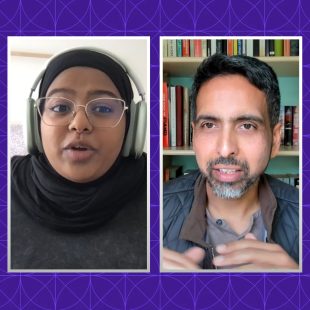
Doha Debates Podcast
Doha Debates Podcast brings together people with starkly different opinions for an in-depth, human conversation that tries to find common ground.

Lana
A podcast in Arabic for today’s generation to discuss their outlook on the world, hosted by Rawaa Augé.

